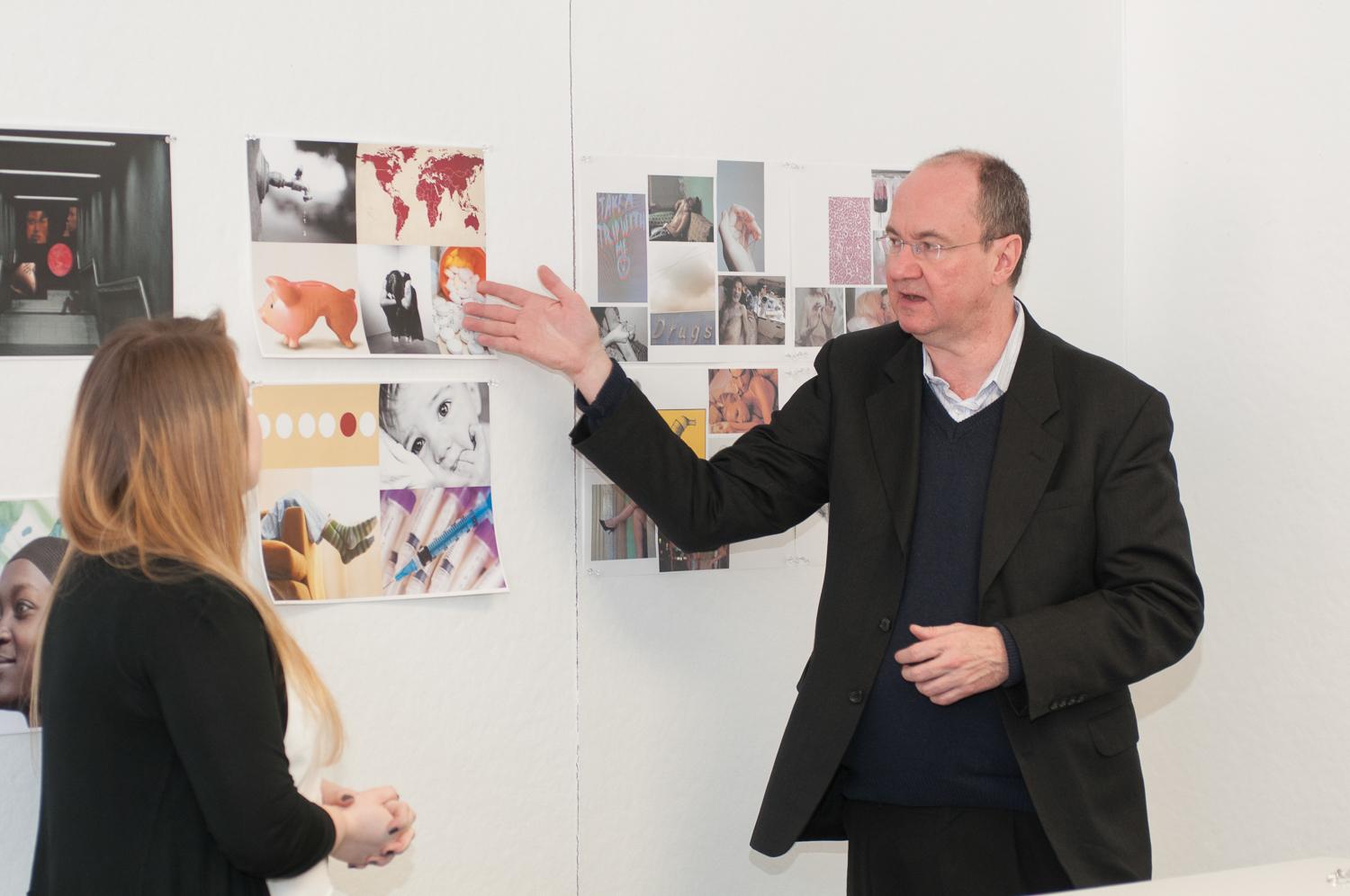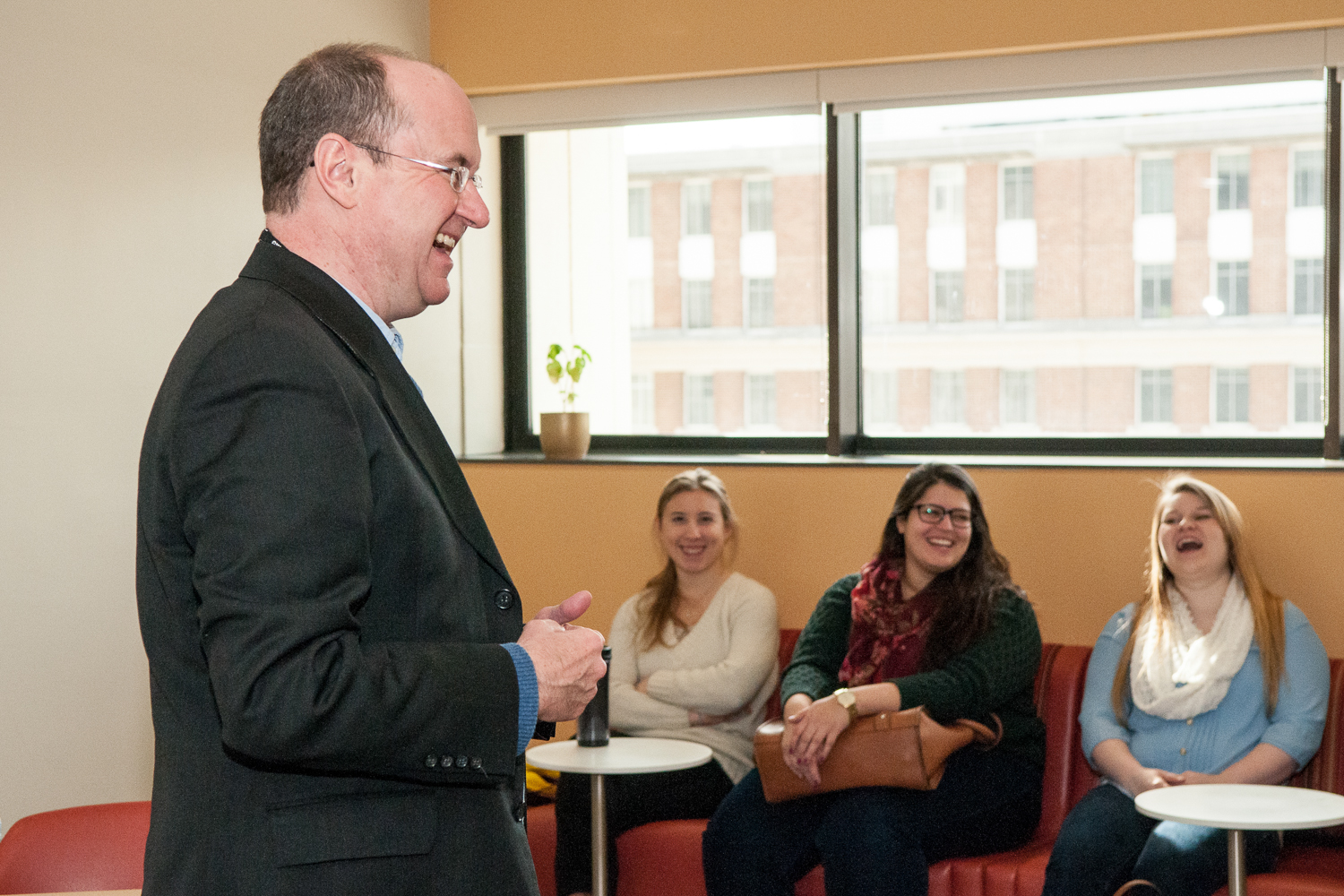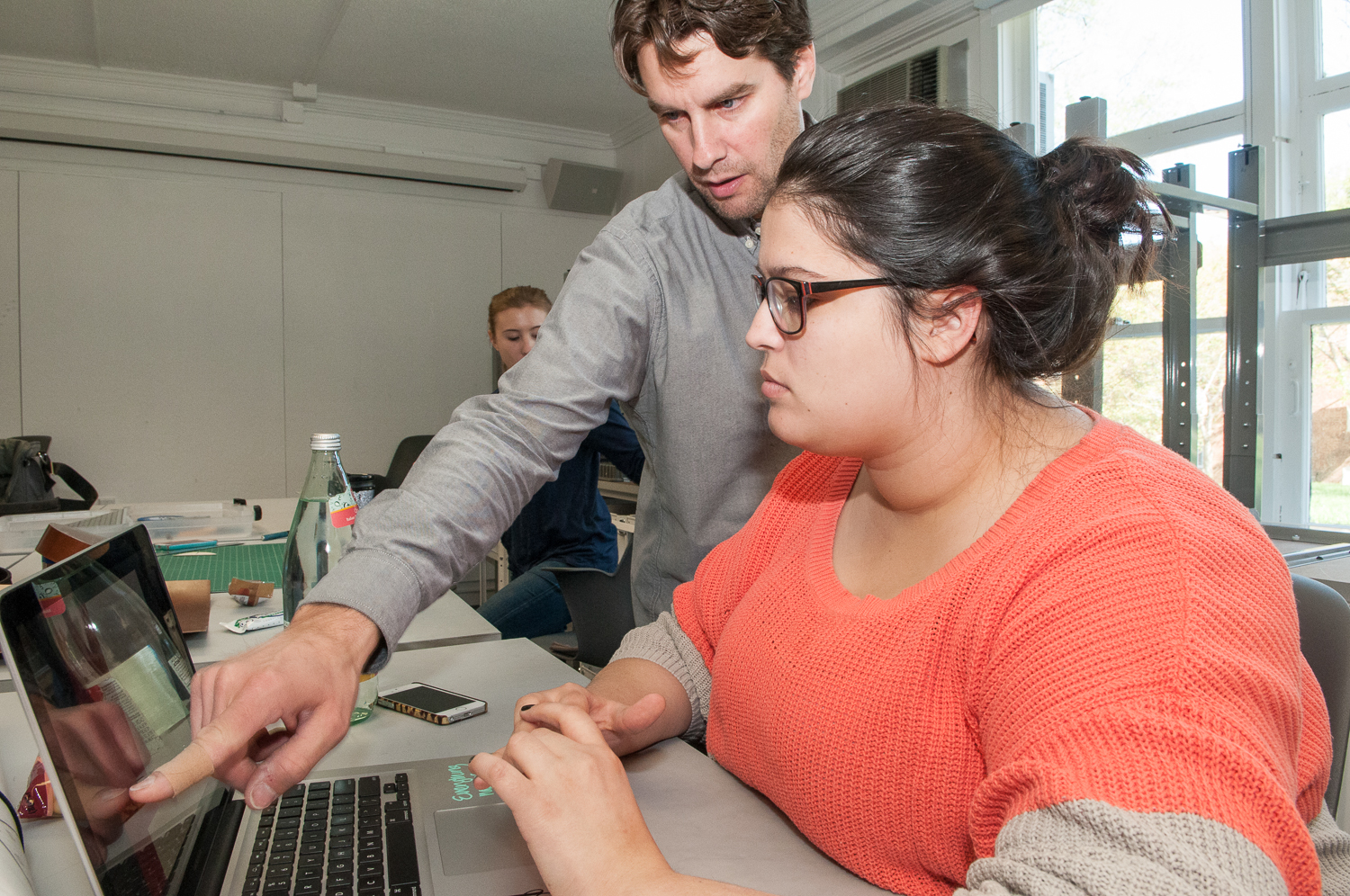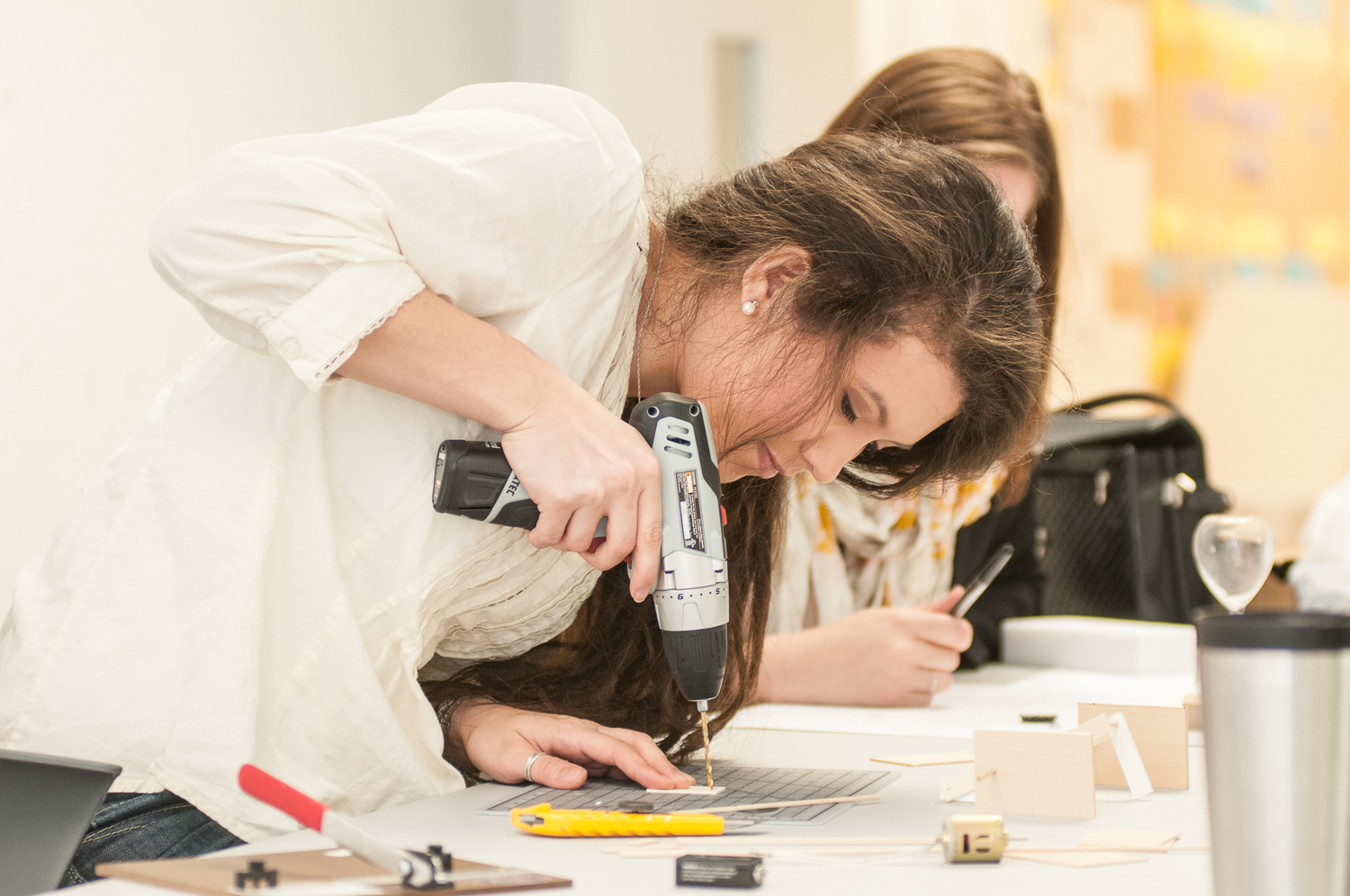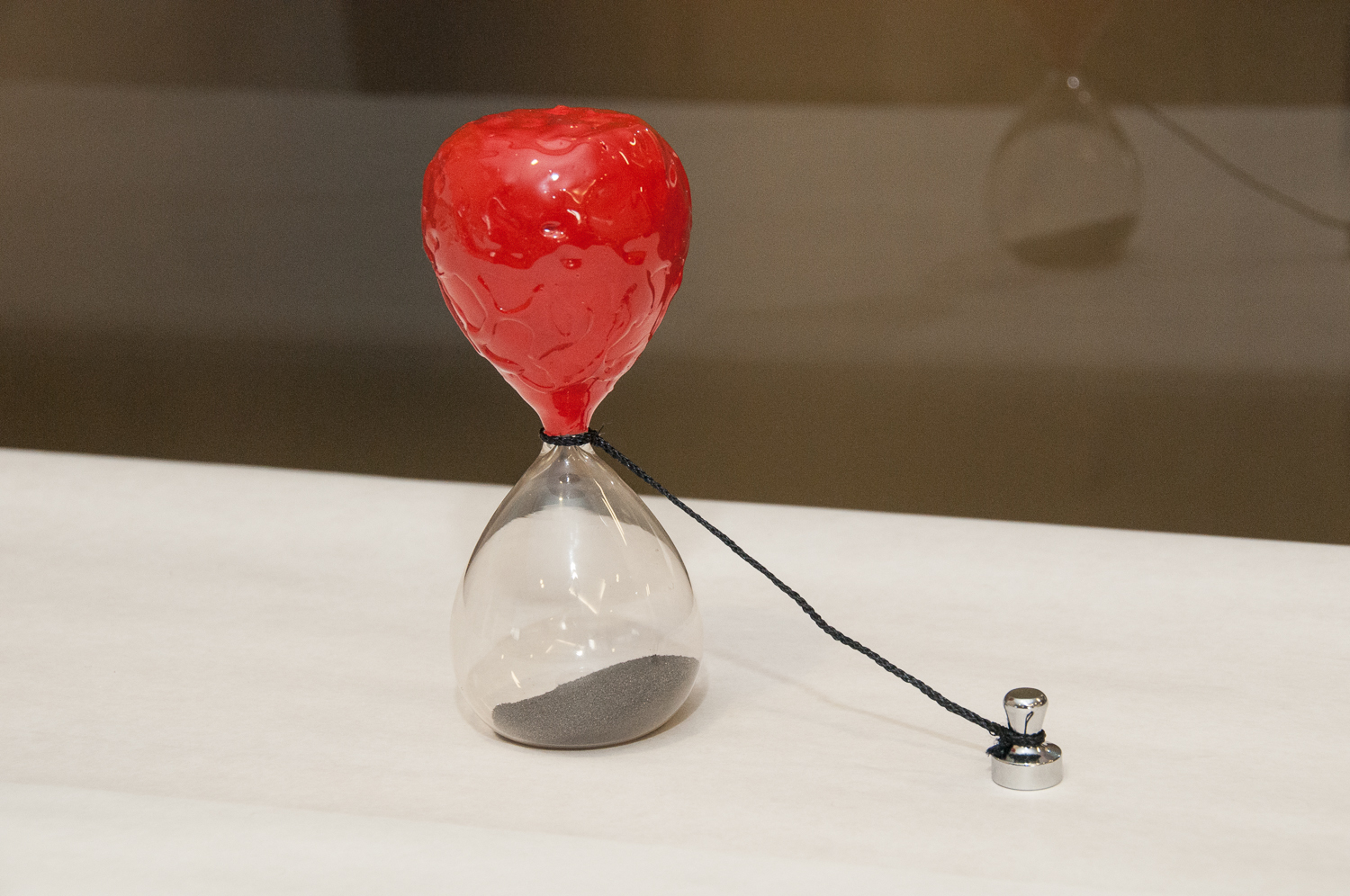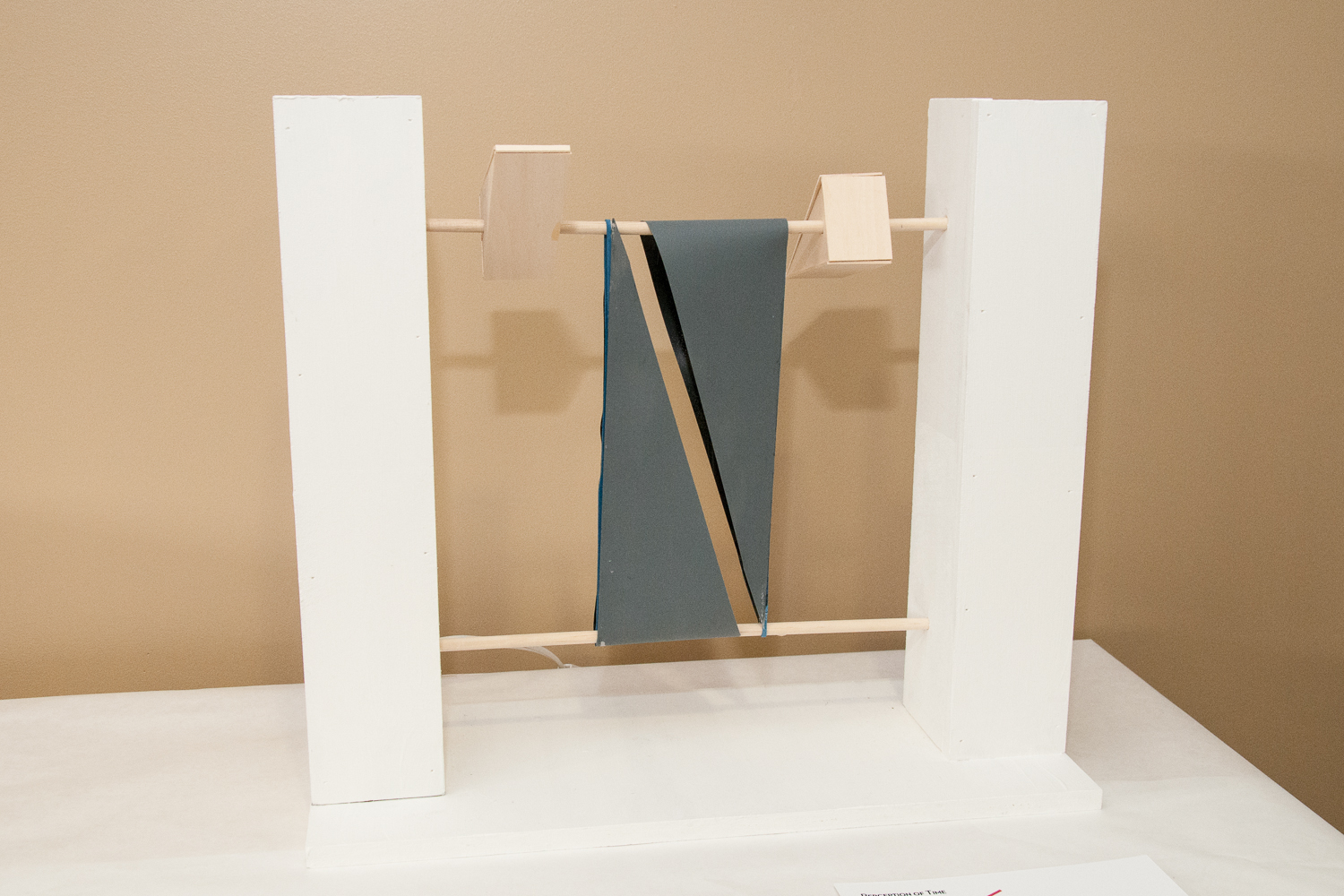By Kristin Hubing
Ross Professor of Basic Science Research Douglas Nixon spends a lot of time in airports. Whether the renowned HIV/AIDS researcher is traveling to labs around the country, lecturing at international conferences or visiting his native England, he notices each airport’s ubiquitous display of clocks, indicating the current time in cities around the world.
“I was looking at one of these panels, when it came to me: There are 12 numbers on a clock face, and you can replace each number with a letter. ‘Time To End HIV’--it’s 12 letters,” said Dr. Nixon, who is also the chair of the Department of Microbiology, Immunology, and Tropical Medicine (MITM) at GW’s School of Medicine and Health Sciences (SMHS).
This observation led Dr. Nixon and Scott Jones, an adjunct professor in GW’s Interior Architecture and Design program in the Columbian College of Arts and Sciences, to champion an innovative collaboration between the two departments. They conceptualized “Design for Good,” an elective course devoted to exploring design thinking and communication in the context of supporting HIV/AIDS research.
“The students—three M.F.A. candidates and five undergraduates—explored how design can succinctly communicate the saga of AIDS; especially the hopes, the aspirations, the frustrations and the realities of the disease,” said Mr. Jones, who pushed for the elective’s creation, developed its curriculum and taught the inaugural course during the 2014 spring semester.
Students in the four-month course designed and built timepieces to be permanently displayed in Ross Hall’s MITM lab space. Through proportion, color and texture, the digital and analog timepieces communicate various components of HIV/AIDS. The class culminated with an interdepartmental presentation, in which each student shared what they had designed.
To obtain various perspectives on the disease, the budding designers toured Dr. Nixon’s newly constructed 35,000-square-foot lab in Walter G. Ross Hall and spoke with community volunteers who work with HIV/AIDS patients and their families.
“It is a testament to the strength and depth of GW faculty that IAD took this project on, and Stephanie Travis and Scott Jones have created a new paradigm in design courses," Dr. Nixon said. "It is also a testament to the quality and breadth of GW students, which led to such inspiring pieces."
Mr. Jones hopes that his design students, who have been inspired by Dr. Nixon’s HIV/AIDS research, will, in turn, inspire researchers with their new perspectives on the disease.
“Researchers live and breathe their work every day, so it’s no longer new to them,” he said. “The value of a collaboration like this is that the designer, who has a layman’s perspective, sees things that might not be obvious to those in the field.”
Chelsea Michelson, M.F.A. ’14, valued the class as an opportunity to address societal realities.
"This is such a powerful outside world problem to be a part of,” she said. “It was a great experience.”
Ms. Michelson’s timepiece, titled “Our Choice and Perception Impacts Our Motion,” explores the duality of time, which can sometimes appear to move forward, while at other times seems to move backwards.
“I think it’s relevant whether you’re thinking about it as the patient or the person trying to find a cure,” she said. “Do you feel that you have enough time, or do you feel like your time is running out? You’re always battling those two sides.”
Throughout the semester, Mr. Jones encouraged his students to approach their surroundings and routines with a critical eye.
“As a designer, I’m keenly aware that everything around us that is manmade has been designed, and that someone has thought about how it’s going to be used or interpreted,” he said. “Not everything is designed well, and whether the things we use work well or not, we tend to become accustomed to compromising our experiences in our everyday lives. As designers, we have the opportunity to improve our surroundings and experiences through critical observation while employing the design process.”
Dr. Nixon’s admiration for the students’ work is palpable.
“It’s absolutely phenomenal to see the realization of the effort and time that you put into this project,” he told the students as they presented their timepieces. “Everyone who sees your work will see that time is an important factor in this infection. If we don’t do anything, then more people are going to get infected.”
He said that in the future, he hopes “interior design and medicine will meet again.”



